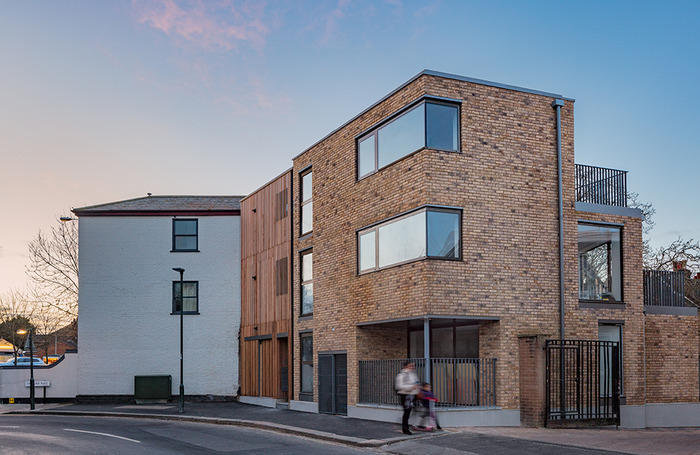A new government partnership with Barclays has been announced by Housing Secretary James Brokenshire, offering development finance to small- and medium-sized housing developers.
The £1 billion Barclays partnership, launched last week as the Housing Delivery Fund, is an attempt to diversify the range of housing providers, although developers applying will be expected to have a track record on delivering projects on time and to budget.
Brokenshire says the new fund will be looking to promote innovative methods of housing delivery, though not exclusively. The government has already made it clear that it wants to prioritise offsite manufacturing in publicly funded projects from next year.
Homes England, which is committing £125m to the funding pot, will administer the scheme and provide funding between £5m and £100m for new homes, including social housing, retirement living and apartments to rent.
A detailed prospectus has yet to be published, but Barclays is reported to be looking at raising its usual limits of 65% loan-to-cost and 55% loan-to-value to 80% and 70% respectively, significantly reducing the amount of non-bank finance that developers need to find.
Although there have not as yet been any details of what interest rates the loans will incur, Will Wimshurst of Wimshurst Pelleriti says the Barclays partnership sounds interesting enough to seek more details. His practice acts as both architect and developer, so he is used to raising development finance.
‘We use banks – it’s good for our track record – but we also have our own investors who bring flexibility to the arrangement,’ says Wimshurst. 'Funding partnerships come with less risk, because the private investors can be more accommodating than a bank if the market turns.'
He is more concerned with minimizing the risk profile of projects, which tend to have slim profit margins at modest scales, than in squeezing the maximum amount of funding from a single lender by getting a higher loan-to-cost-ratio.

James Brokenshire’s statement also announced the launch of two new funds – one for large sites, one for small – to provide infrastructure for ‘stalled’ housing sites. The latest government funding programmes aimed at overcoming barriers to development on such sites both featured in last November’s Budget Statement but went live this week.
‘Issues like land contamination, infrastructure requirements, and complex land ownership can present real barriers to building homes where they are needed most,’ said Brokenshire.
‘From today [17 September 2018], the government is intervening by providing two streams of investment – the Land Assembly Fund and the Small Sites Fund – for Homes England to deploy alongside their expertise. This will help release land to deliver 300,000 new homes a year by the mid-2020s.’
The larger of the two, the £1.3 billion Land Assembly Fund, will be used to acquire land needing work and get it ready for the market, making it less risky for developers to invest in and start building. This will be a hands-on programme for Homes England, targeting large development sites.
The announcement offered a site in Burgess Hill in Sussex as an example, one which had lain undeveloped for years. Homes England bought the land and will deliver infrastructure, including roads, schools and doctors’ surgeries, to facilitate a plan for 3,000 new homes.
Meanwhile the £630m Small Sites Fund will provide grant funding to speed up infrastructure provision for smaller sites and is aimed specifically at public land owners and local authorities. For public land owners that are struggling to develop their own sites, the Fund will provide grant funding to enhance the attractiveness of sites for developers by providing the necessary infrastructure for house building.
In London the government will work directly with the Greater London Authority to target funding from both the large and small site funds.
Will Wimshurst will present a CPD session on ‘How to set up and run a property development business’ at ‘Guerrilla Tactics 2018: Expanding Practice: Navigating the architecture of planning, procurement and property’, which takes place at the RIBA on 13–14 November 2018.
Thanks to Will Wimshurst, Director, Wimshurst Pelleriti.
Text By Neal Morris. This is a Professional Feature edited by the RIBA Practice team. Send us your feedback and ideas
RIBA Core Curriculum Topic: Business, clients and services.
As part of the flexible RIBA CPD programme, Professional Features count as microlearning. See further information on the updated RIBA CPD Core Curriculum and on fulfilling your CPD requirements as an RIBA Chartered Member.
Posted on 20 September 2018.









